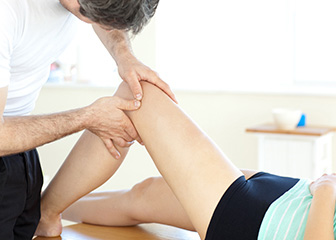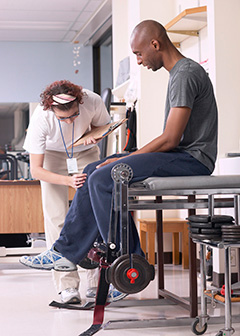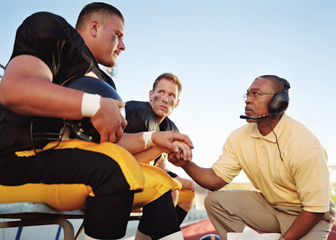Summary

| Quick Facts: Athletic Trainers | |
|---|---|
| $41,600 per year | |
| Bachelor’s degree | |
| None | |
| None | |
| 18,200 | |
| 30% (Much faster than average) | |
| 5,500 | |
What Athletic Trainers Do
Athletic trainers specialize in preventing, diagnosing, and treating muscle and bone injuries and illnesses. They work with people of all ages and all skill levels, from young children to soldiers and professional athletes.
Work Environment
Many athletic trainers work in educational settings, such as secondary schools or colleges. Others work in physicians' offices or for professional sports teams. Some spend much of their time working outdoors on sports fields in all types of weather.
How to Become an Athletic Trainer
Athletic trainers need at least a bachelor’s degree, although both bachelor’s and master's degrees are common. In most states, athletic trainers need a license or certification; requirements vary by state.
Pay
The median annual wage of athletic trainers was $41,600 in May 2010.
Job Outlook
Employment of athletic trainers is expected to grow by 30 percent from 2010 to 2020, much faster than the average for all occupations. As people become more aware of sports-related injuries at a young age, demand for athletic trainers is expected to increase, most significantly in schools and youth leagues.
Similar Occupations
Compare the job duties, education, job growth, and pay of athletic trainers with similar occupations.
O*NET
O*NET provides comprehensive information on key characteristics of workers and occupations.
Contacts for More Information
Learn more about athletic trainers by contacting these additional resources.















